5 Reasons People Don’t Catch As Many Trout As They Should
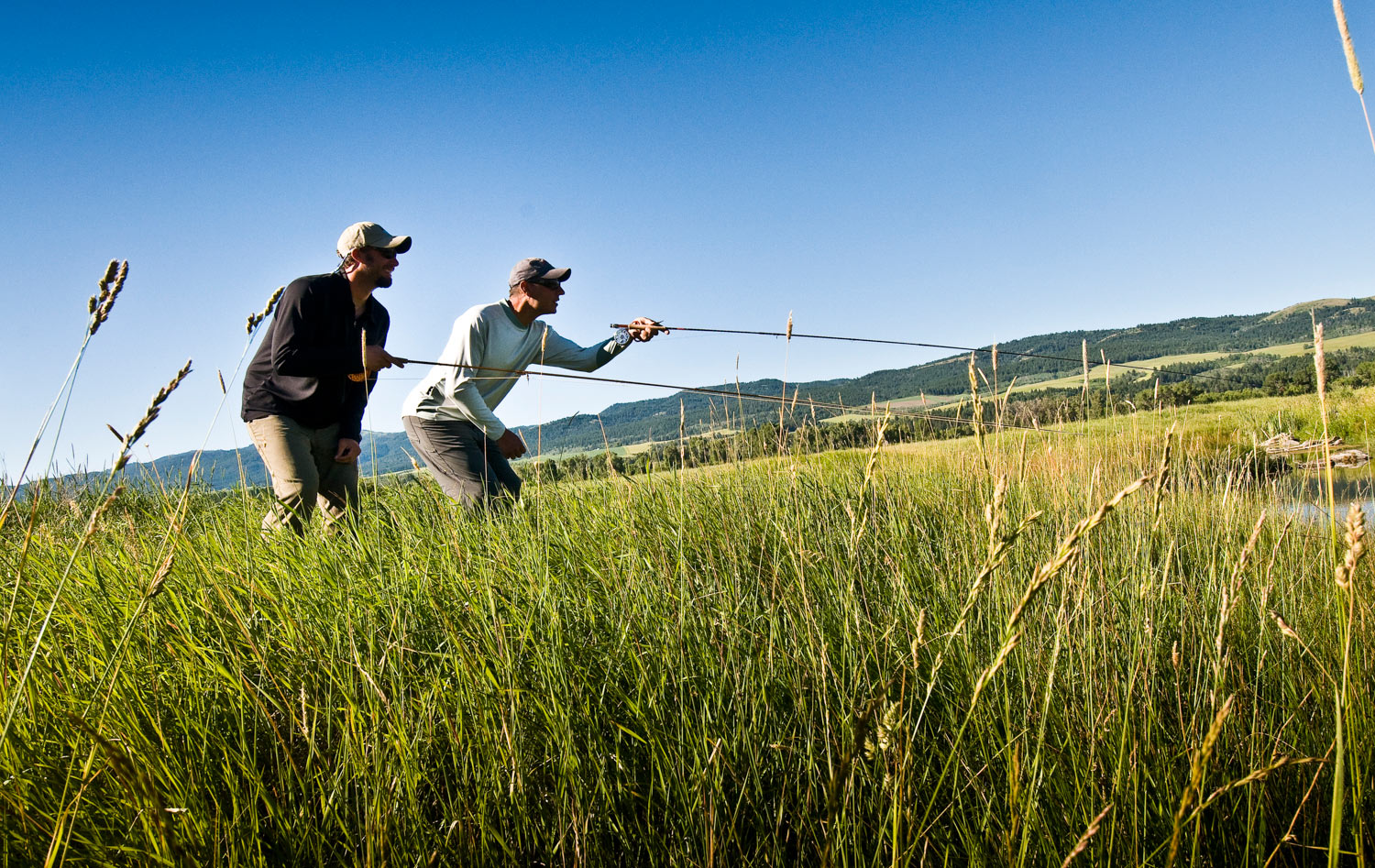
By Kyle Wilkenson
These 5 bad habits will keep you from catching the fish you deserve.
Whether I’m guiding or working in the shop, one thing rings true– I talk to a lot of anglers. Living in Denver, a lot of these anglers have made it past the ‘beginner’ stage but still aren’t catching as many fish as they’d like, or with the consistency they’d like. It is not enough in fly-fishing to simply get comfortable with your clinch knot and roll cast and expect the numbers of fish you’re catching to increase dramatically. I guide a lot of our customers who fall into this category– let’s call it ‘intermediate– and over the years it seems we always end up working on the same 5 things.
SO WITHOUT FURTHER ADIEU, HERE ARE MY TOP 5 REASONS PEOPLE DON’T CATCH AS MANY TROUT AS THEY SHOULD:
1. They Cast First and Look Second. I started with this reason because, in my opinion, it is the one thing people have the most trouble wrapping their head around. In reality, the correct order would be Look First. Cast Second. This is particularly true if you fish anywhere that presents itself with sight fishing opportunities. Whenever you approach the river, take a minute (or sometimes literally several minutes) and study the water. You’ll be amazed how many times there will be fish right at your feet, ready to eat your fly. More often than not though, people walk right up to the river and charge on in without ever breaking stride. By doing this, not only did you likely just walk through fish that could have been caught, but you also just sent them darting for the depths in a panic which can put other fish in the area on alert. Spotting fish in the water is not an ‘easy’ skill and is not something you learn to do in one day. Sure, we guides may make it look easy some days to spot fish wherever we walk, but I promise you this skill was hard-earned. Start making it a point to study the water looking for fish and once you have those first few successes, you’ll never look at the river the same way again.
2. They Don’t watch the bubbles. If you’ve never paid attention before to the speed of the bubbles on the surface versus to the speed your indicator,,when nymphing, it’s time to start. Simply put, the indicator NEEDS to be floating slower than the bubbles on the surface and here’s why. When it comes to nymphing, most of the time the fish you’re targeting are going to be sitting very tight to the bottom. The water on the bottom of the river is moving slower than the water on the surface. If your indicator is floating the same speed as the bubbles on the surface then this means your flies are whizzing by the trout at an unnatural rate of speed, if they’re even getting down into the zone at all (which they’re likely not). This problem can easily be fixed by
Read More »10 Types Of Water That Always Hold Trout
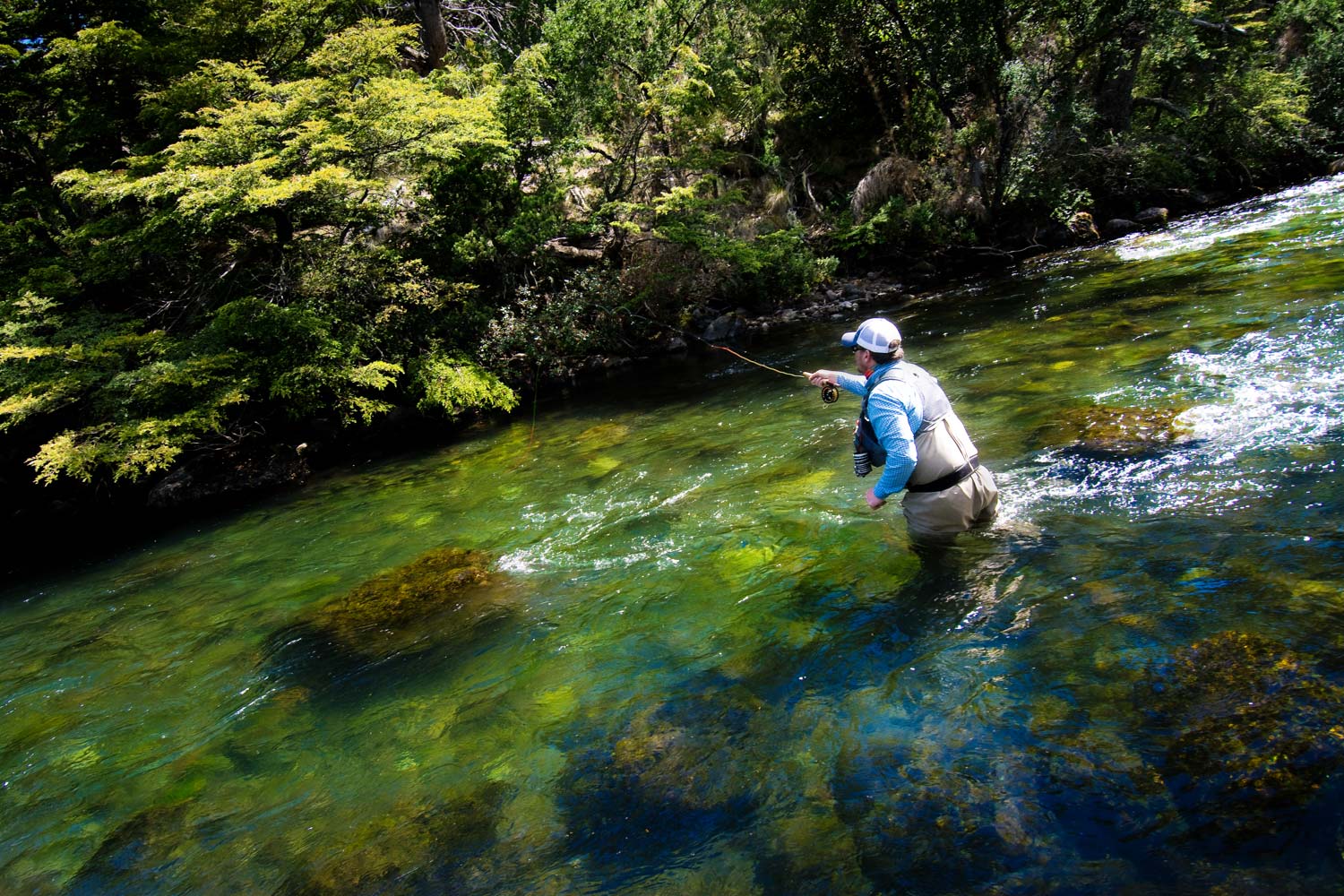
If you are new to trout fishing, you may find yourself asking, “Where exactly are the fish?”
At first the river may seem like a puzzle. Especially large rivers where anglers new to the sport are easily overwhelmed by options. Once you learn to read the water and understand what draws fish to certain types of water, the river becomes a road map with great holding water marked everywhere.
The most basic principal which guides the angler to holding water is called “The 3 Cs.” They stand for current, cover and cuisine. The three things every trout needs to be happy and survive. The trout needs current to deliver food. He needs cover for safety and a reliable food supply. These three things can be found anywhere trout hold. If they are not present, neither are the trout.
There are a few things to add to that very basic list as you start your search for trout. Although the trout wants to be near current, he can’t afford to exert the energy to hold in that current. He needs a refuge where he can sit and wait for food to arrive. He also needs oxygen. Oxygen levels are not homogenous in a river. Disturbances in the water’s surface add oxygen and trout like to be near them. Colder water always holds more oxygen and trout are drawn to it. Cover may come in many forms, including depth, structure, surface disturbance and overhanging vegetation.
Lots of options, but as you learn to understand the trout and his habits these thing make themselves obvious. You learn to look at big water in sections as if it were many smaller streams running together. You will begin to visually recognize the kind of water where you have caught fish before and before you know it, finding fish becomes second nature.
Here’s a list of 10 types of water where you will always find trout.
Read More »Sunday Classic / DIY Fly Line Loop with Step-by-Step Instructions
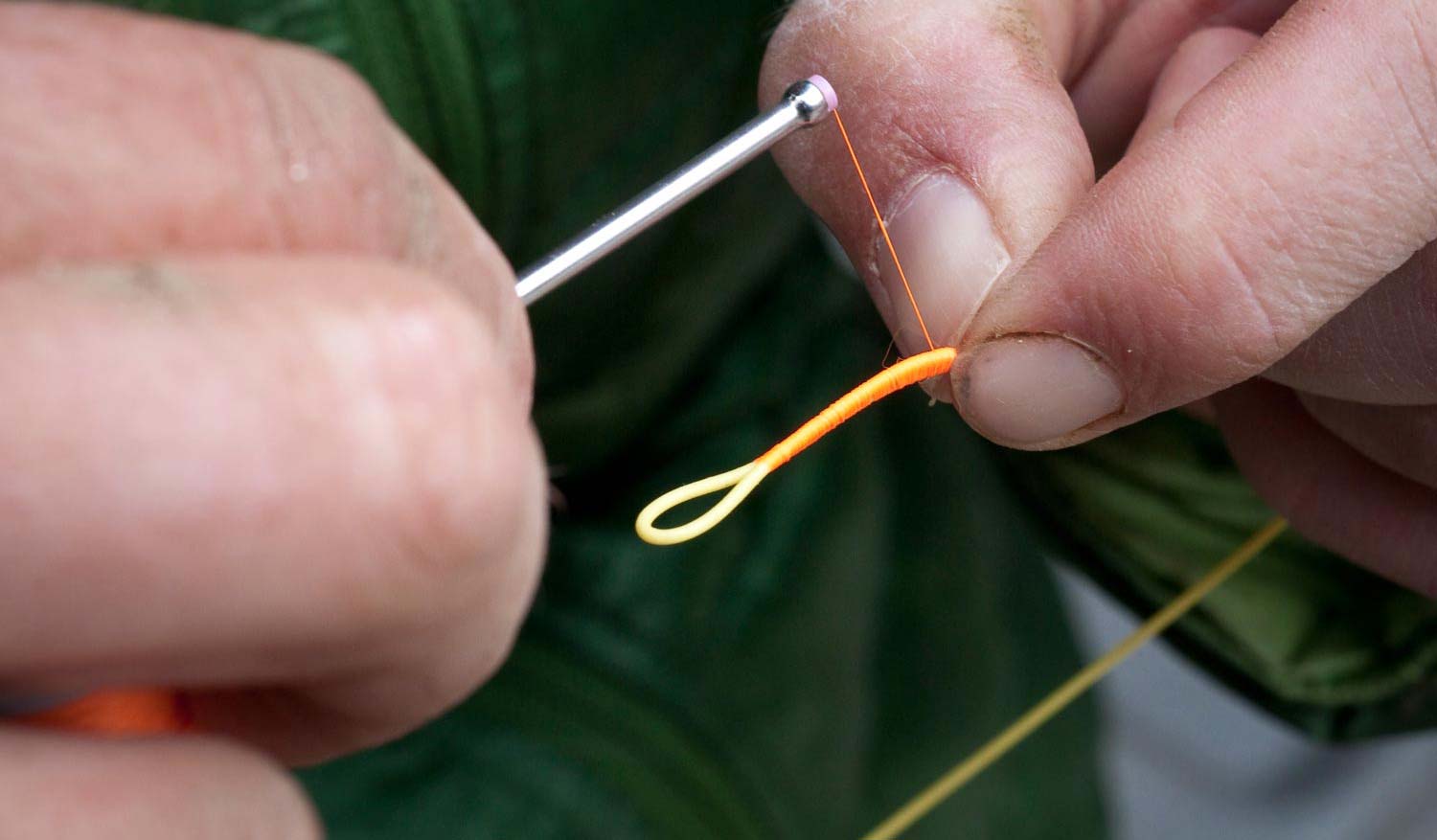
Most fly lines these days already come with welded loops at the ends for the easy attachment of backing and leaders. If you fish as much as I do though, eventually they get worn out and need to be replaced. Most anglers just use a standard albright knot or nail knot to fix this. It works perfectly fine, but I prefer instead to tie my own fly line loops with a fly tying bobbin and thread. Done correctly, it will provide a stronger connection to your leader than the manufacturers welded loops or knots you tie (this is important when fly fishing for big game species). The bright thread that you tie the loop with also works really well as a spotter. It comes in real handy when you’re fly fishing and you have conditions where it’s hard to keep track of your fly in the water. That bright spot on the end of your fly line provides a quick reference that your fly is a leaders length away. Below are step-by-step instructions for tying your own fly line loops.
Read More »Saturday Shoutout / Silver Kings
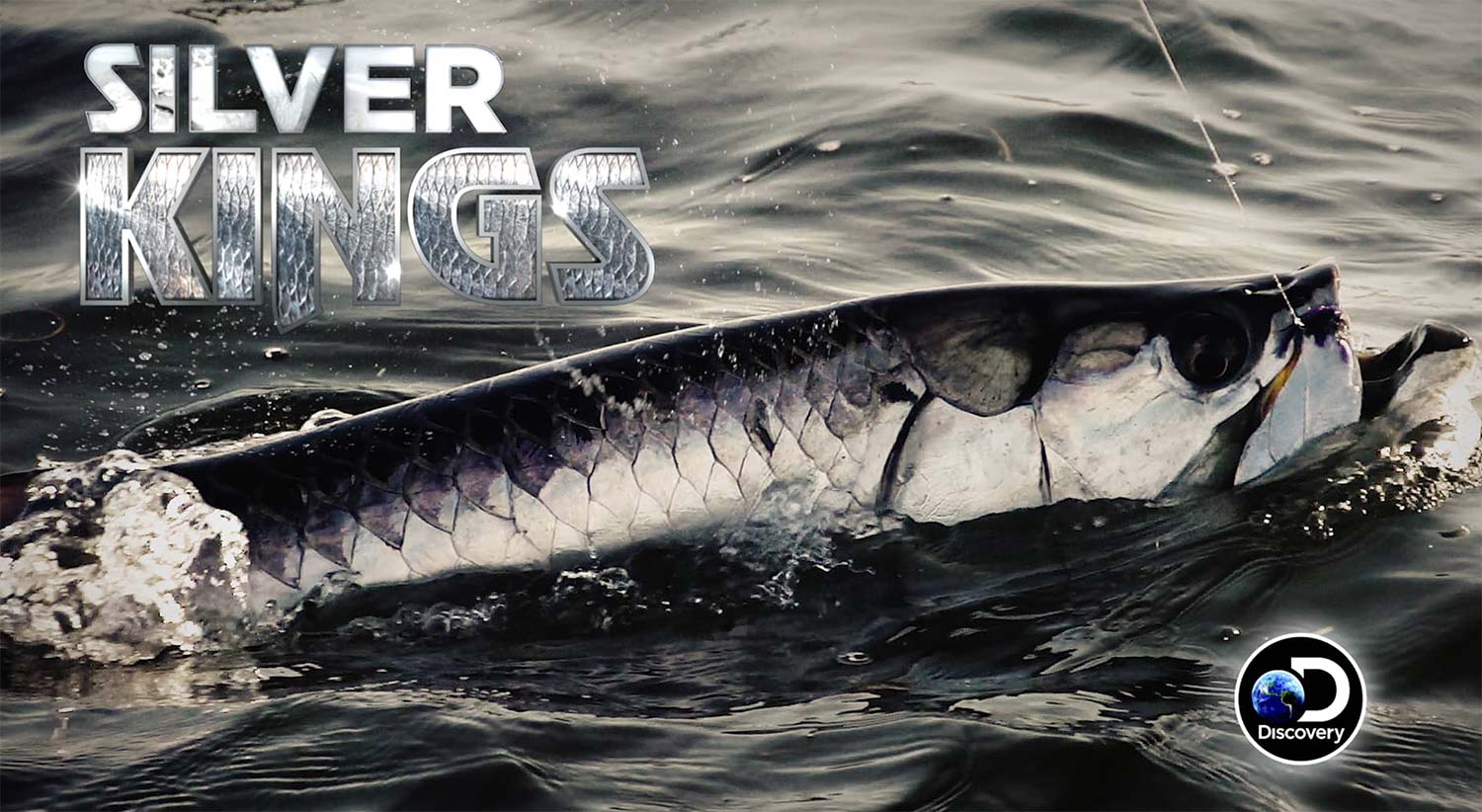
If this doesn’t make you ache for tarpon season, you should see a doctor.
The 4th season of Silver Kings is now airing on Discovery Chanel. This trailer for Season 4 has so much heart pounding tarpon action it will have you calling a Keys guide, begging for days. If you love tarpon, give Silver Kings a spin.
SILVER KINGS SEASON 4
Read More »Build Your Own Fly Rod: DIY Video #2
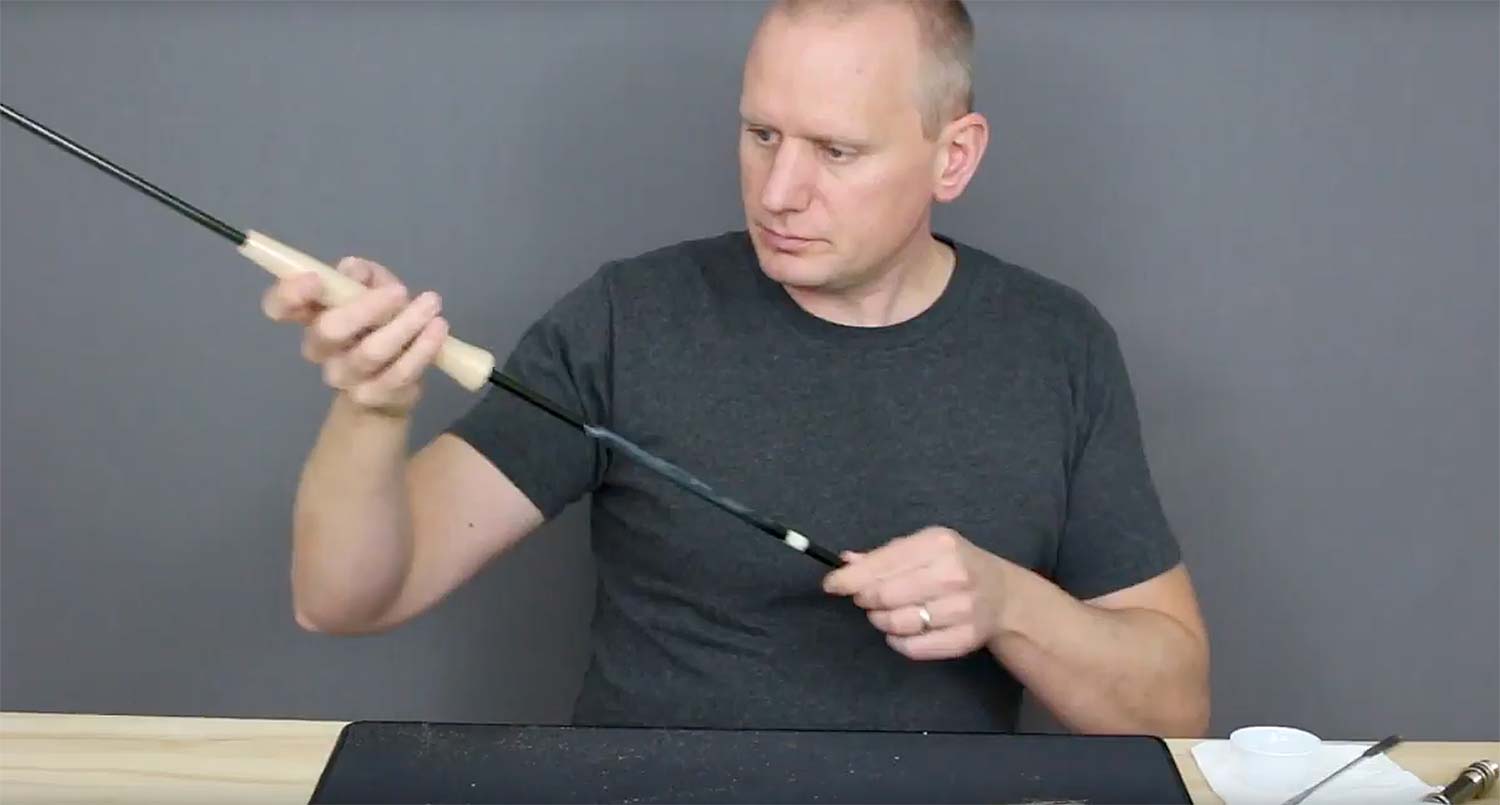
Matt Draft is back for the second video on building your own fly rod.
In this week’s video Matt will help you understand the components that make a quality fly rod. You’ll learn about the choices available in grips, reel seats, guides and more. Matt also goes over rod kits and how to find the right one. In the second half of the video you’ll learn to file a cork grip to fit and secure it in place.
As a special thank you to G&G readers, Matt will be offering free shipping on all of his kits for the next seven weeks. Just use the code G&Gfreeship on his web site.
UNDERSTANDING ROD COMPONENTS AND FITTING THE GRIP.
Read More »Use Birds to Quickly Locate Bait and Schools of Fish
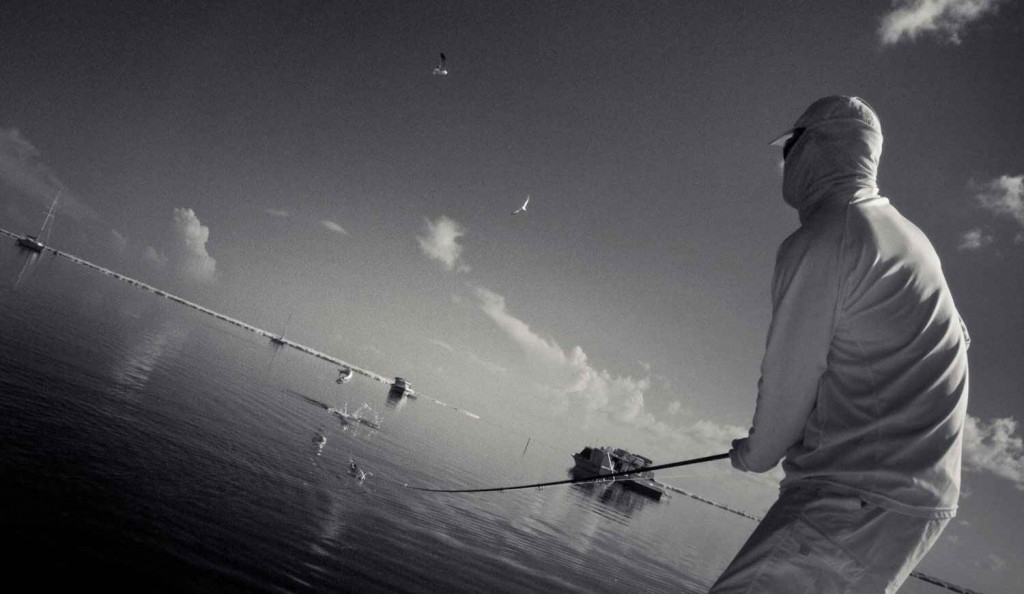
By Kent Klewein
Certain times of the year in both freshwater and saltwater, anglers can use flocks of actively feeding birds to locate large concentrations of bait and fish.
This was the case during my recent fly fishing trip with Capt. Joel Dickey. First thing, early in the morning, we’d run a wide sweeping perimeter with the boat, as we searched for seagulls on the feed. Binoculars weren’t a necessity but they allowed us to be more efficient by eliminating large areas of water that would otherwise be too far off for the naked eye. Being patient, continuing to cover water, and keeping confidence were the key factors in us successfully locating feeding birds. Be prepared for it to take a little while some days. For us, each morning it took a little while to find the birds, but eventually things fell into place with each scouting attempt. As the sun begins to rise over the horizon, it creates a perfect contrast of light that turns seagulls a bright neon white. You’d be surprised how far off you can pick out feeding birds this time of day. Any birds you find on the water means there’s probably bait and fish near by, but when you find diving birds in good numbers, you know there’s a feeding frenzy in progress.
I’ve used birds many times in the past to locate schools of striped bass on my local reservoirs, but this saltwater trip was my first time using seagulls to locate tarpon. The seagulls and tarpon were feeding on a shrimp die off, that happens during the hottest times of the year in the evenings and at night. During these periods
Read More »The Greatest Christmas Story Ever

Admittedly this story doesn’t have much to do with fly fishing except that it happens in the parking lot at Simms, and it’s awesome.
My buddy Rich Hohne, like a lot of us, did some traveling this Christmas. He spoke at a conference in Arizona just before the holiday and his travel plans brought him home to Bozeman on Christmas Eve. With a total of about five Uber cars in Bozeman, Rich wasn’t confident he’d get one on Christmas Eve so he knew he’d need a plan to get home from the airport.
A coworker was traveling for the holiday so Rich hatched a plan to save them both the airport parking fees. His buddy would fly out on the twenty-third and leave his truck in the lot. Rich would fly in on the twenty-forth, pick up the truck and drive it to the Simms plant, where his truck was parked. When his buddy came home, his girlfriend would pick him up at the airport.
It was a simple plan. Rich’s buddy sent a text telling him where the truck was parked. The keys were in the fuel door, just like running shuttle. Everything went smoothly until Rich landed in Bozeman. He’d boarded that plane in sunny Arizona in flip-flops, shorts and a t-shirt. When he touched down in Bozeman it was nine below and snowing.
Read More »Sunday Classic / Scent attractor in fly fishing?
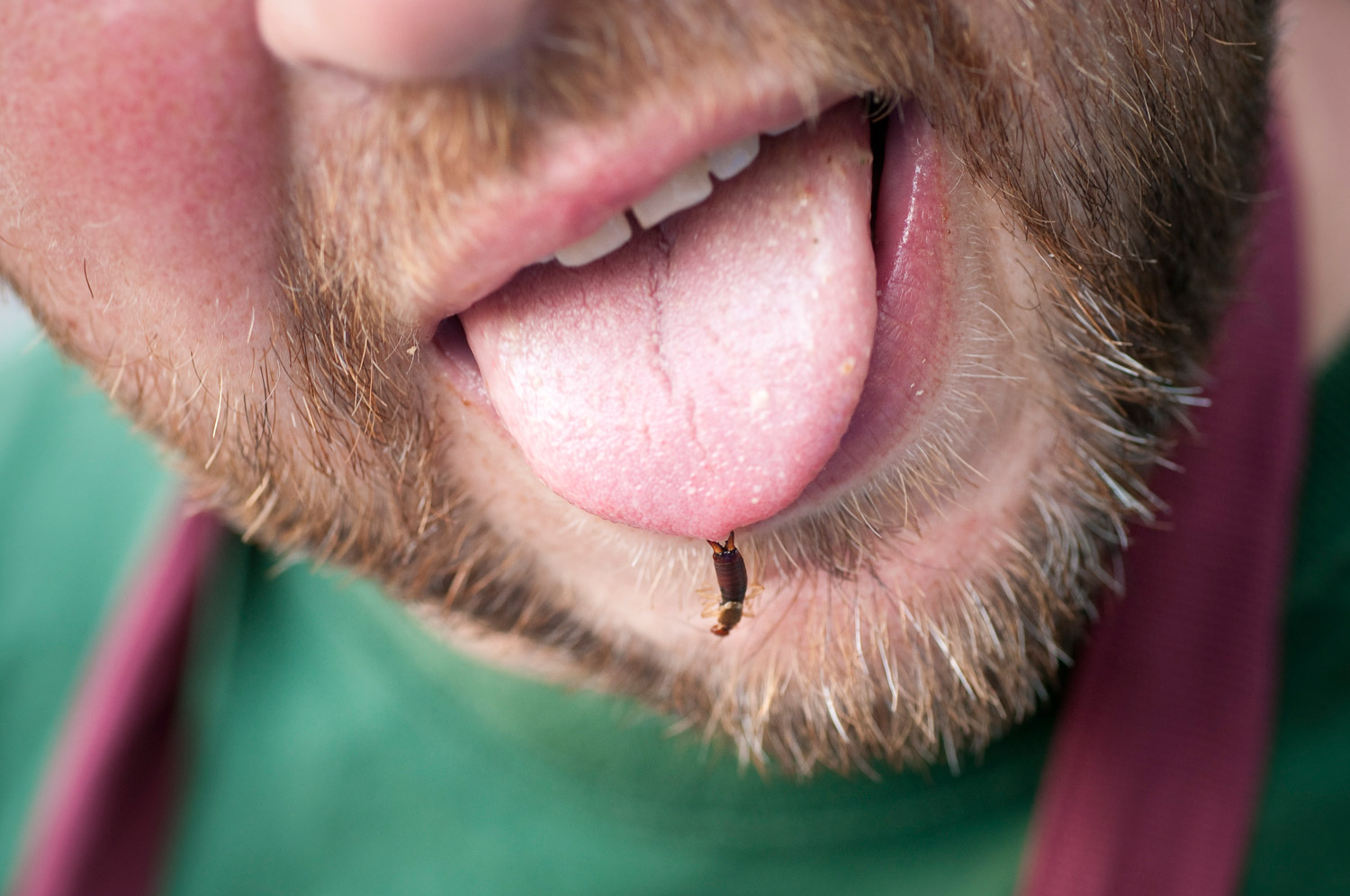
I RECENTLY DID A PHOTO-SHOOT FOR ATTRAXX, A COMPANY WHOSE NAME MAY BE FAMILIAR TO SOME OF YOU.
Attraxx makes soft plastic baits for gear fishing in both fresh and saltwater. These aren’t your grandfather’s rubber worms. The plastics are infused with five patented attractors that stimulate fish into striking. It’s apparently far more complex than just scent or taste and frankly I don’t totally understand all of the details. These guys have a handful of PhDs to my none, but I spent a few days watching these high tech baits in action and I can tell you they work insanely well.
I’m not a gear fisherman. I don’t say that because I feel like I’m above it. Gear fishing takes a lot of skill and knowledge, it’s just not my thing. I don’t do it so I’m not good at it and I don’t understand it. Doug Long, the man behind Attraxx, does understand it. I’ve known Doug for years as a skilled fly fisherman and we’ve wetted our boots together on plenty of occasions so I was surprised to hear that he was now running a plastic bait company.
I was even more surprised to hear that Attraxx is considering new products for fly fishermen. Imagine that, flies tied with materials that release neural stimulators into the water, whipping fish into a feeding frenzy. A couple of years ago I’d have said, “no way! Nobody will buy it,” but these days, I’m not so sure. Let’s look at the trend.
People raised a fuss when
Read More »Saturday Shoutout / Echo Casting Tips
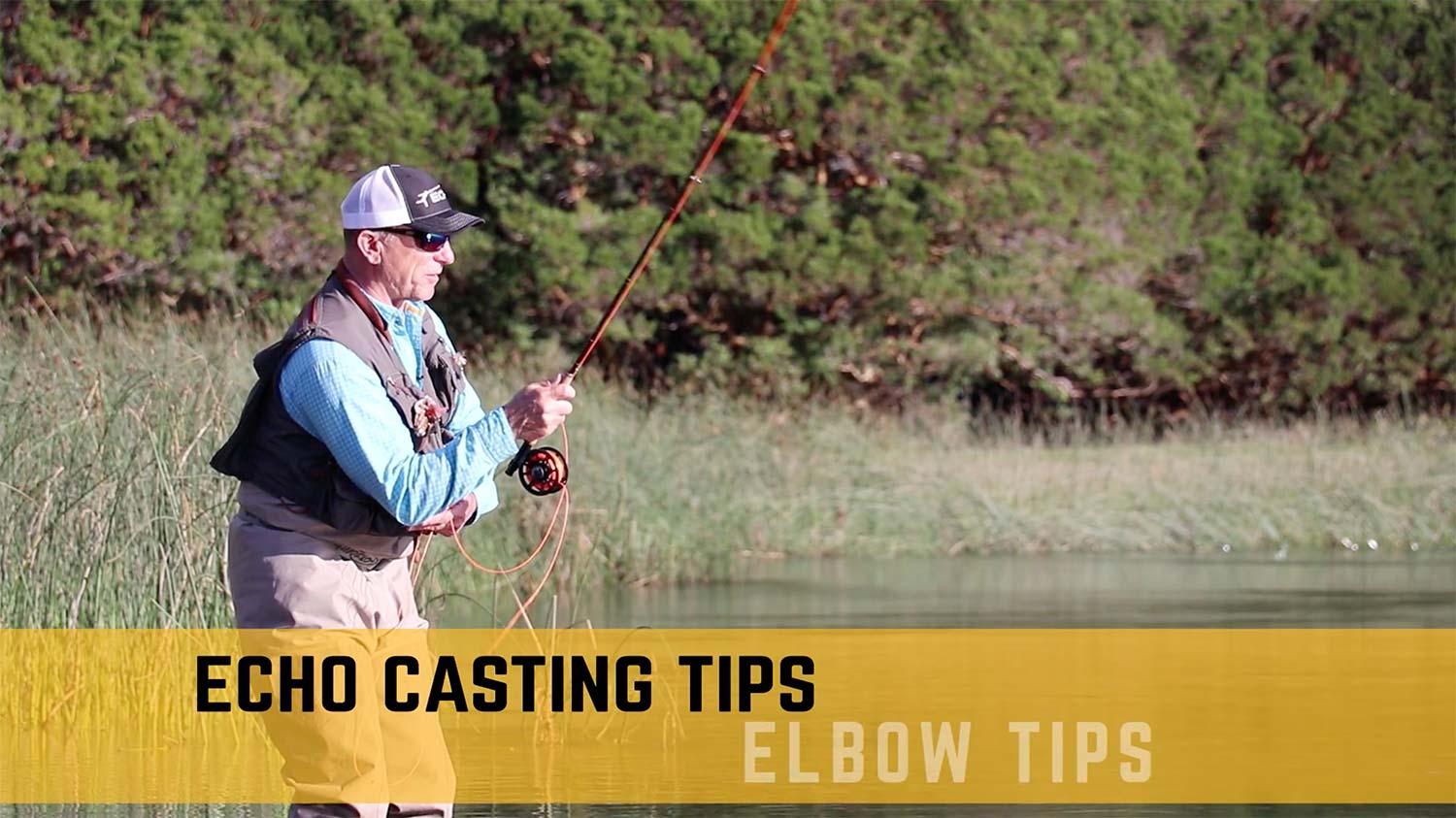
No one knows more about fly casting than the Echo Man, Tim Rajeff.
I can watch Tim cast for hours. It’s just a thing of beauty, but in addition to being one of the worlds best casters, Tim is also the best casting instructor i know. He is able to explain the most technical aspects of the fly cast in ways that anyone can understand. that’s a rare gift.
Part of Tim’s mission at Echo is making fly fishing accessible for everyone. That starts with making performance oriented fly fishing gear at affordable prices but it doesn’t stop there. Tim and the staff at Echo also produce a lot of great educational content, which is free on their web site. That’s just part of Tim’s generous spirit.
Below are three great fly casting instruction videos from the Echo Casting Tips page.
Read More »Wind in Saltwater is Your Friend Not Your Enemy
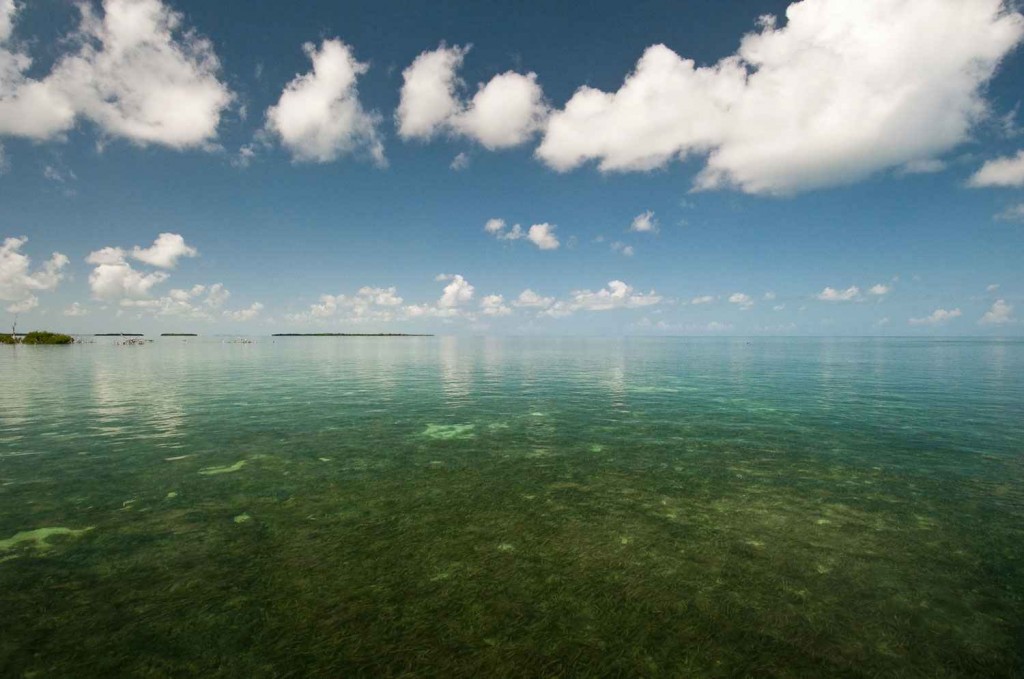
ITS 6:30AM IN THE MORNING WHEN WE ARRIVE AT THE BOAT LAUNCH IN BIG PINE KEY, FL. WITHIN MINUTES OF STEPPING OUT OF THE CAR THE STAGNANT HUMID AIR BEGINS TO SUFFOCATE MY BODY.
The North Georgia mountain weather that I’ve grown so accustomed to, feels like air conditioning compared to this, and my body is still in shock from the drastic climate change. As I walk down to the boat ramp to help unload the boat, I feel the first drops of sweat rolling down my back. I think to myself, are you freaking kidding me? The sun isn’t even up yet. There’s absolutely zero breeze this morning, so calm you could spot a fish rolling on the surface three hundred yards away. My eyes seem confused at what their witnessing. If you had blindfolded me, and taken me here, there’s a good chance I’d guess I was on a freshwater reservoir. Call me crazy, but I was under the impression there’s always supposed to be at least some wind in the saltwater. I’d know better, but I’ve spent very little time in the Florida Keys during the late summer. Apparently, it’s quite common to go days without any wind during the months of July, August, and September. Awww, it makes total sense why I saw all those sailboats anchored up now.
You always overhear fly fishermen complaining about too much wind on the saltwater flats, but you rarely hear fly fisherman begging for it. To much or too little of either can spoil your fly fishing on the saltwater flats, making fishing conditions extremely tough. Believe it or not, wind is your friend and can at times, be an asset for fly fishermen. For starters, wind disturbs the waters surface, which can make fish
Read More »